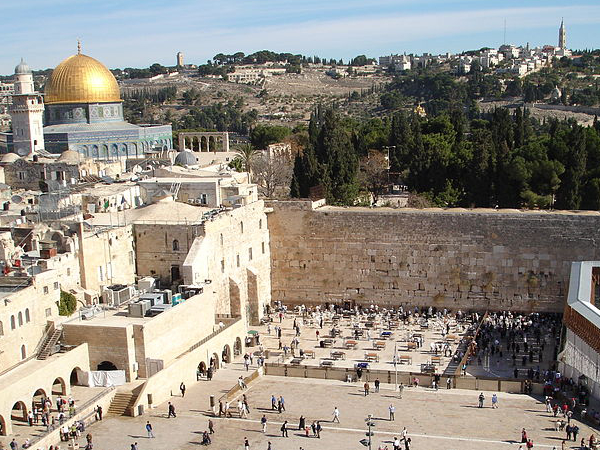The famous “Western Wall” of the Temple Mount in Jerusalem is a special place of prayer and worship, as well as of cultural connection. It is the west-facing wall of the huge platform upon which the Jewish Temple stood. The wall is part of an expansion of the Temple Mount complex made by Herod the Great and physically serves as a retaining wall for the fill that was moved in for the construction. This was the Temple Mount platform that Jesus knew and visited. It is an impressive, spectacular example of architecture and engineering. When the Romans destroyed the Temple and everything on the platform, they did not destroy this part of the retaining wall.
The Muslim shrine called the Dome of the Rock stands where the Temple did in Jesus’ time as well as in the time of Solomon and the Judahite kings, when the first Temple was in use before its destruction by the Babylonians in 586 BC. The Western Wall plaza is below this and slightly to the south. It is the nearest place to the ancient Holy of Holies where God’s presence dwelled in Jerusalem that is accessible to Jewish worshipers. It is one of the most holy places on earth for observant Jews and is officially an outdoor synagogue with a rabbi. This is why men wear the kippa (yarmulke) to cover their heads when they come to the wall and why men and women worship separately.
As the Sabbath sets in on Friday evenings, Jews celebrate in the plaza with singing and dancing. On Mondays and Thursdays, boys celebrating the important rite of passage called bar mitzvah can be seen surrounded by family, friends, and community near the wall. Throughout the week, men and women pray at the wall, including many who visit from around the world.
When we travel there, we take some time to linger for individual prayer and to experience the holiness and history of this extraordinary place. Many follow the tradition of writing a prayer on a small piece of paper and tucking it into the wall to leave behind. We don’t believe that God receives these prayers any differently from those offered elsewhere around the world, but it does help us to connect our prayers and needs with the reality of God’s presence and God’s promise never to leave us.
Photo: Golasso / CC BY-SA


